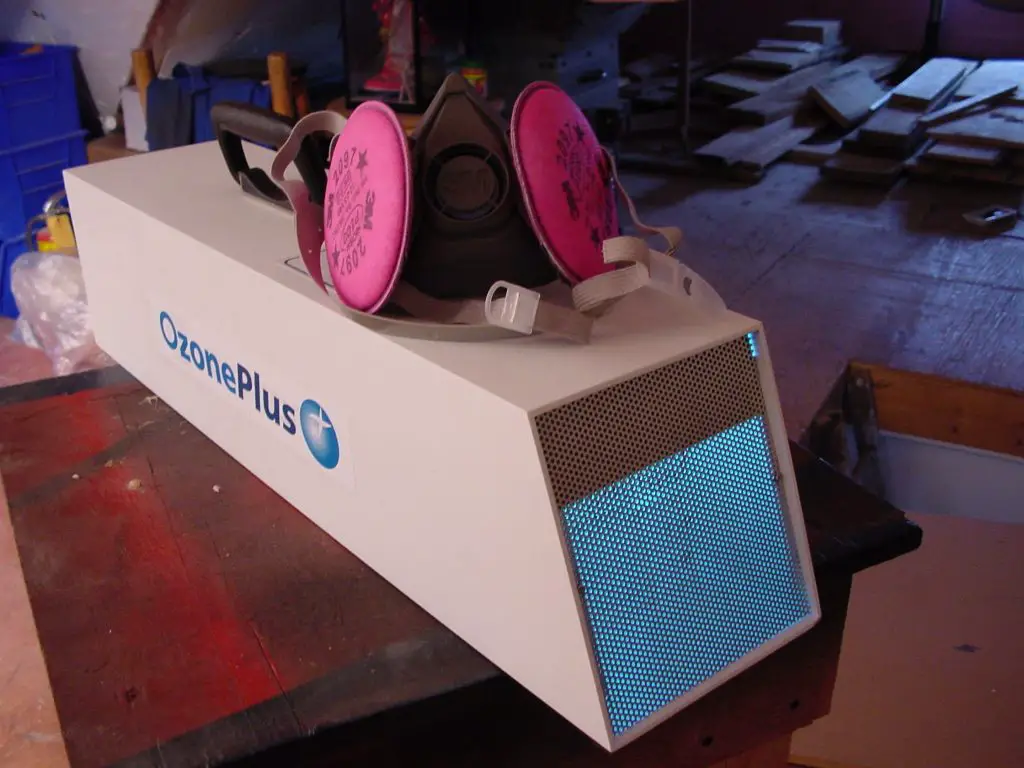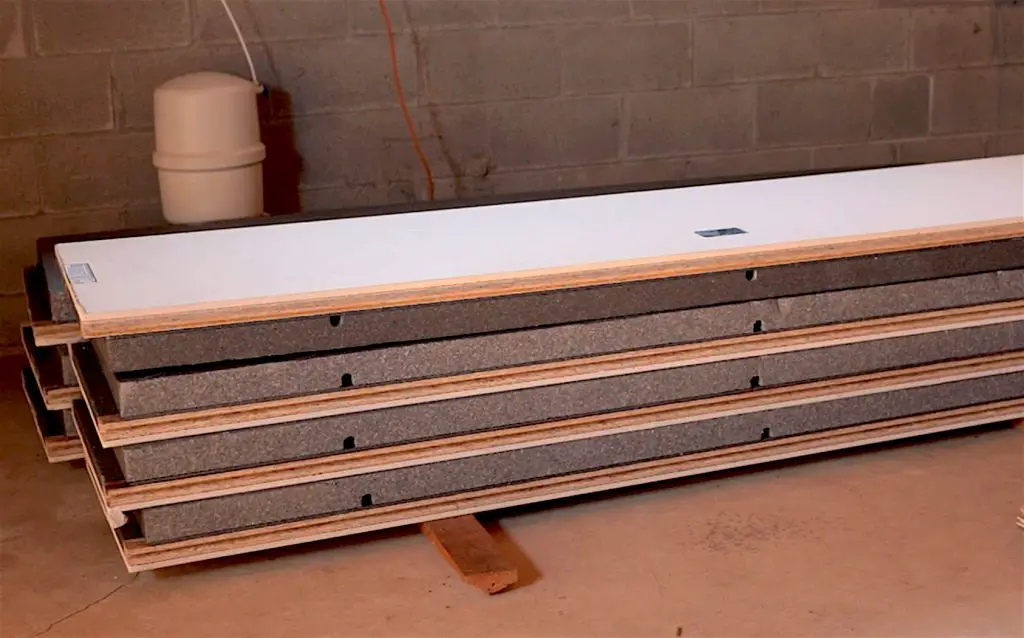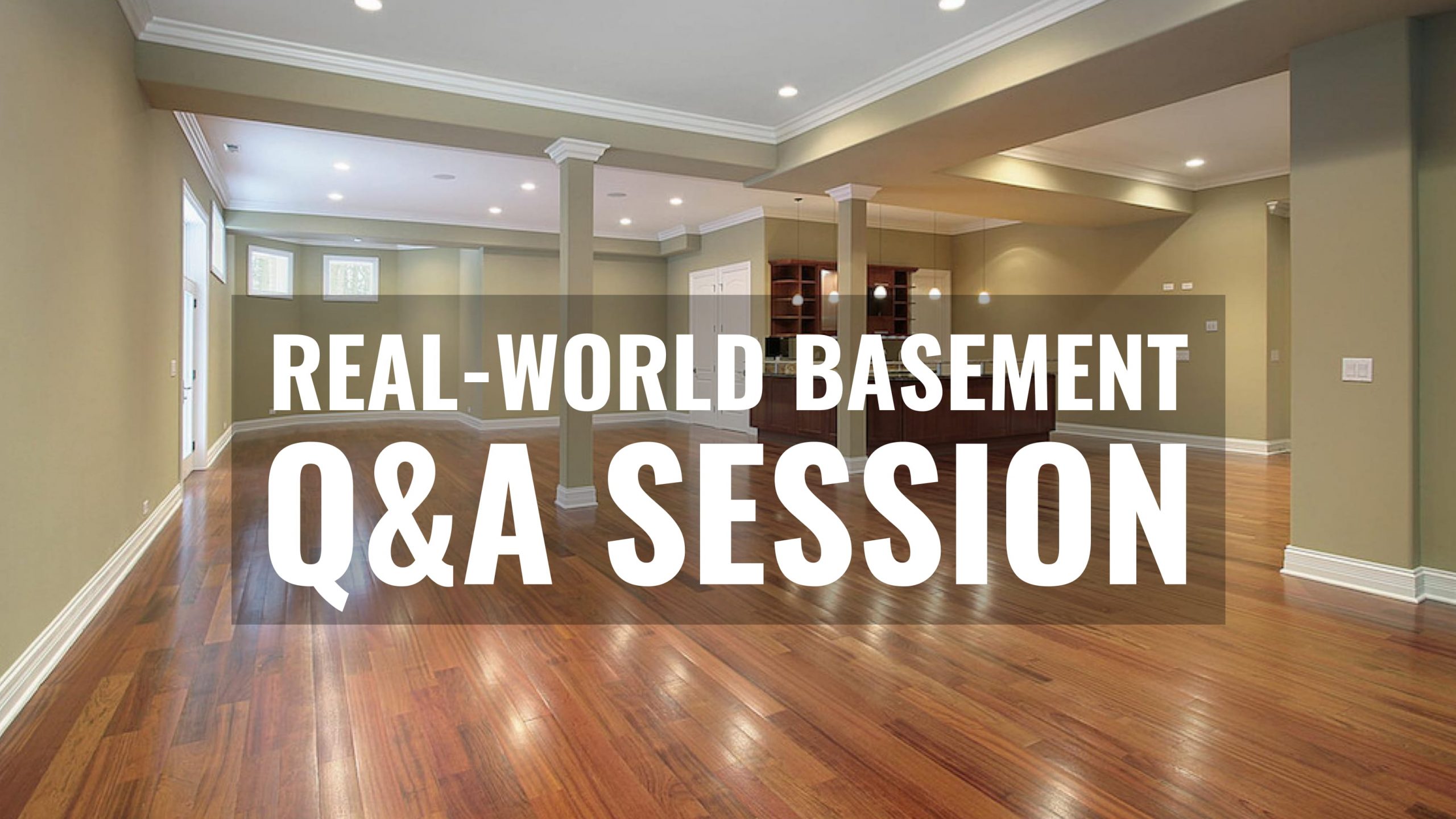I get basement renovation questions by email from people around the world, and I do my best to answer as many as I can. Below you’ll find a Q&A exchange I had with JM, a homeowner looking to finish an old basement. The questions and answers about crack repair, wall insulation, flooring and odour elimination apply to many basement situations. You should definitely know about the details here before finishing your basement.
- Reading Time = 4 minutes
- Video#1 Watch Time = 10 1/2 minutes
- Video#2 Watch Time = 4 3/4 minutes
- Video#3 Watch Time = 4 minutes

Eliminating Mouse Nest Odours
JM: We bought a 1927 duplex and discovered a huge and smelly mouse infestation in the basement. My husband took out all the ceiling, drywall and old carpet, but the smell remains. What can we do?
Steve: I love old houses, but most hold a surprise or two. Mouse infestations are common, and an ozone generator is the best way I know of to get rid of bad smells in all situations. Ozone is extremely powerful at getting rid of odours because it oxidizes the offending substances. Ozone is also completely safe if you let it dissipate and break down for an hour or so after running an ozone generator in a given space. That’s my ozone generator below.

Basement Crack Repair Cost
JM: A foundation guy has quoted $10,000 to fill foundation cracks. Does this seem reasonable?
Steve: It’s absolutely unreasonable! That’s an absurd price based on what I’ve seen in your photos. For $500 to $1000 in materials you can fill and reinforce those cracks perfectly yourself with the best carbon fiber materials available. I wouldn’t trust anyone who quoted me $10,000 for this job. Crack injection in addition to carbon fiber reinforcement of the crack zone offers the best repair and will cost less than 10% of that quoted figure. Watch the video below for my favourite crack repair approach. It’s way better than the typical option of epoxy injection alone.
Which Type of Exterior Wall Insulation?

JM: There are 2×6 studs forming exterior basement walls right now. A basement professional said that the fiberglass insulation that used to be there was fine, but we took that out based on your videos. What should be do?
Steve: Basement finishing professionals are often the last people to give reliable advice about the long-term performance of certain basement strategies. How often would a basement finishing professional cut into walls they built in, say, 1999 to see how they’re doing today? That simply doesn’t happen. Any kind of exterior wall system will work fine in a basement at first, but the issue changes with time. How will it resist internal mold growth 10 or 20 years down the road?
I’d definitely steer clear of any kind of fiber-based insulation between those studs. Spray foam applied between the studs would do a better job, but another option is to take down those existing studs on exterior walls, then reuse the wood for partition walls. This leaves you free to use rigid sheets of foam on the exterior walls, or insulated basement wall panels.
Watch the video below to see how basement insulation panels work.
Spray Foam for Basements
JM: If we use spray foam between the studs won’t it be too close to the wall and not allow for a vapour barrier?
Steve: If you want to go with spray foam, apply a closed cell type between the studs and against the masonry wall, but only after coating the masonry with a waterproof paint such as Drylok or Xypex, just to be sure. Closed cell spray foam acts as its own vapour barrier when applied at least 3 inches thick.
Basement Flooring

JM: The concrete floor has heaved a bit in one spot, so we’ll need to level that area. After that we planned to use 24” x 24” subfloor panels followed by underlay and carpet. We’ve been advised not to use the foam subfloor panels but you’ve recommended them before. Is one better than the other?
Steve: Foam subfloor panels work well and do deliver somewhat more warmth underfoot than panels with plastic legs on the bottom. A new product called Insul-Armor is a dense, all-foam subfloor panel that delivers the most warmth of any subfloor option I’ve seen and is fastest and easiest to install in my experience. It’s been available since 2021.
How long have you been in the house? How dry has the basement been during this time? I always advise at least a year of observation to verify that the basement is truly dry all the time.
Watch the basement subfloor video below for more insights on getting this detail right.
 Did you find this article useful? I hope so. Please consider helping me cover the cost of creating and publishing content like this. Click the “buy me a coffee” button below for a fast, safe and simple way to make a contribution. Thank you very much for helping to keep this website up and running.
Did you find this article useful? I hope so. Please consider helping me cover the cost of creating and publishing content like this. Click the “buy me a coffee” button below for a fast, safe and simple way to make a contribution. Thank you very much for helping to keep this website up and running.
– Steve Maxwell




